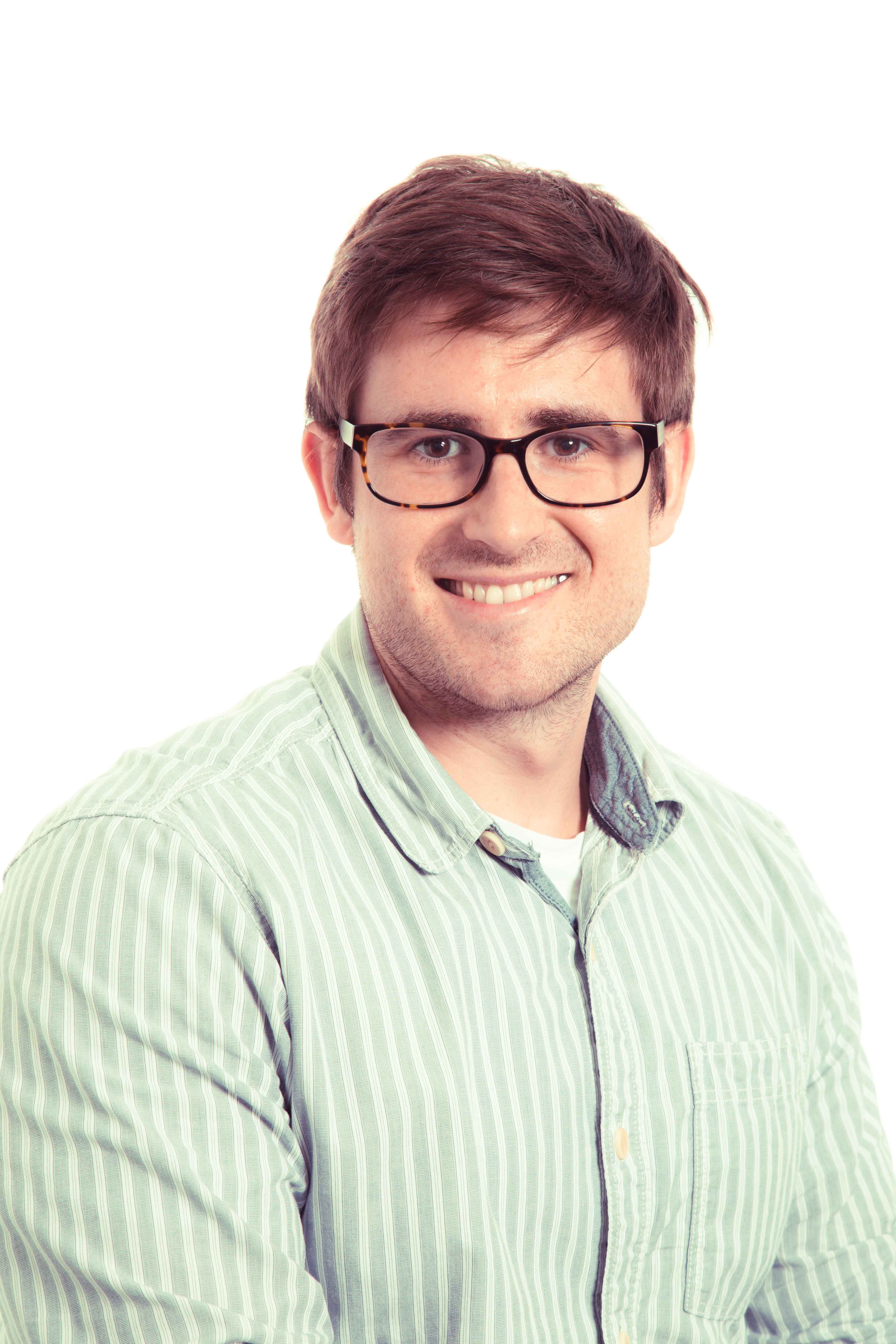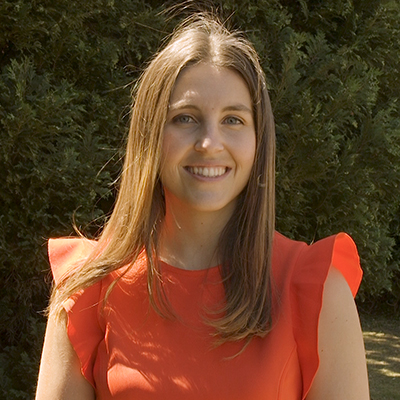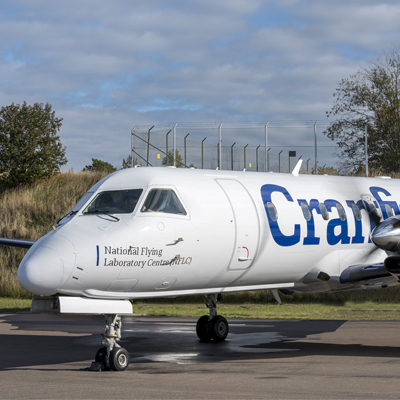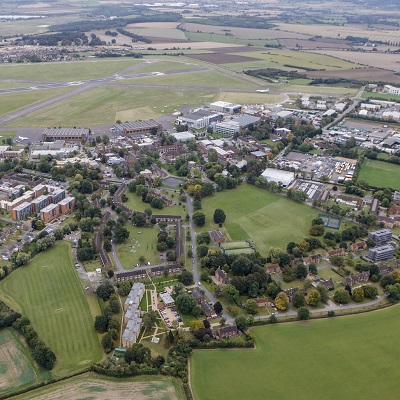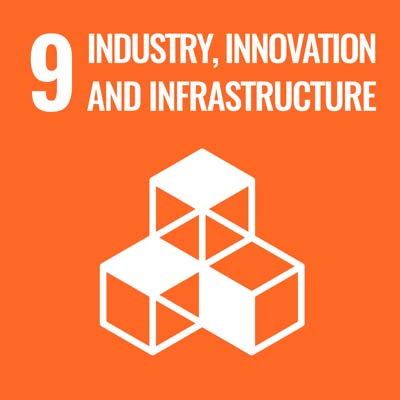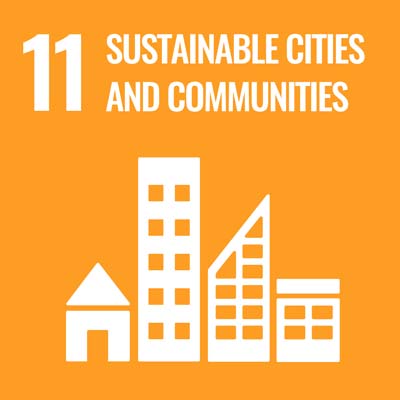There is an increasing global demand for computational fluid dynamics (CFD) specialists with practical and technical knowledge. This course, designed to reflect the wide applications of computational fluid dynamics, will enable you to gain the knowledge and appreciation necessary for a strong foundation in a career in this exciting engineering discipline.
You will learn to understand, write and apply CFD methods across a broad range of fields, from aerospace, multi-phase flow and heat transfer to microflows, bio-medical flows and fluid-structure interaction problems.Overview
- Start dateOctober
- DurationFull-time: MSc - one year; Part-time: MSc - up to three years
- DeliveryTaught modules 40%, individual research project 40%, group project 20%
- QualificationMSc
- Study typeFull-time / Part-time
- CampusCranfield campus
Who is it for?
This course is designed to meet the education needs of graduates and professional engineers who are looking to kick-start an industrial or research career in the ever-evolving field of computational fluid dynamics. It bridges the gap between the introductory level of undergraduate courses and the applied expertise acquired by engineers using CFD in industry. You will gain the knowledge and practical skills to apply CFD methods, necessary for a strong foundation for a career in this exciting engineering discipline.
Why this course?
The MSc in Computational Fluid Dynamics provides a solid background so that you will be able to apply CFD methods as a tool for design, analysis and engineering applications. With a strong emphasis on understanding and application of the underlying methods, students will be able to write their own CFD codes during the course.
Sharing modules with several Cranfield MSc programmes, this enables you to interact with students from other disciplines. In recent years, our students have had the opportunity for work-based placements at Red Bull F1, the Aircraft Research Association (ARA), AIRBUS, European Space Agency (ESA), Ricardo and DAF Trucks.
Informed by industry
Our strategic links with industry ensure that all of the materials taught on the course are relevant, cutting edge and meet the needs of organisations competing within the computational analysis sector. This industry-led education makes Cranfield graduates some of the most desirable for companies to recruit.
The Industrial Advisory Board comprises senior industry professionals who provide input into the curriculum in order to improve the employment prospects of our graduates. Panel members currently represent the following organisations:
| Red Bull F1 |
| Realis simulation |
| MBDA |
| Red Fluid |
| The Exploration Company |
| CFMS |
| City University |
| Strathclyde |
| Destinus |
| Jaguar Land Rover |
| University of Trento |
Course details
The taught modules are delivered from October to April via a combination of structured lectures and computer-based labs.
The core part of the course consists of modules which are considered to represent the necessary foundation of the subject material. The course is designed to reflect the broad range of CFD applications by providing a selection of a group project themes in the field of aerospace, automotive or energy, with direct industrial applications. Students on the part-time programme will complete all of the compulsory modules based on a flexible schedule that will be agreed with the Course Director.
Course delivery
Taught modules 40%, individual research project 40%, group project 20%
Group project
The group project is fundamental for this course as it creates a virtual consultancy environment by bringing together students from various backgrounds to solve an industrial problem. Each group of students will work on a different thematic project, related to a fluid problem encounter in industry. There are three themes: aerospace, automotive and energy.
The group projects are informed by our industrial partners, supported with guest industrial lectures, technical presentation, specific software demonstration and computer lab tutorials. Each member of the team will be responsible for a specific analysis covering all stages of CFD workflow, pre-processing, solving and post-processing. The team will be required to organise meetings, manage resources, manage task dependence, report on the computations and conduct comprehensive analysis.
Problem solving and project coordination must be undertaken on a team and individual basis. Students will also develop interpersonal skills necessary to embark on their future careers as engineering and technology leaders.
At the end of the project, the group is required to report and present findings to a panel from industry and academia.
Individual project
The modular and group project components of the course finish in May, at which point you will have an excellent understanding of CFD methods and applications. From May to September you will work full-time on your individual research project. The research project gives you the opportunity to produce a detailed piece of work either in close collaboration with industry, or on a particular topic which you are passionate about.
Recent individual research projects include:
• CFD analysis of a sanitary micro-combustor;
• RANS modelling of turbulent drag reduction on aircraft;
• Rarefied CFD simulation by DSMC model of satellite at low earth orbit;
• CFD study of aircraft carrier ship air wake interaction with helicopter under extreme conditions;
• Hybrid DNS/LES of a flame kernel configuration in premixed turbulent combustion;
• Fluid structure interaction of a deformable wheel-tyre configuration by an overset method;
• Aerodynamics analysis of the DrivAer under realistic highway driving conditions;
• RANS modelling by deep learning for aerodynamics applications;
• Multi-objective optimisation for unmanned aerial vehicle formation flight by multi-fidelity approach;
• Aerodynamic analysis and optimisation of the Aegis unmanned aerial vehicle;
• Aerodynamic analysis and noise prediction of rudimentary landing gear;
• Phase separation of oil-water flow in a pipe bend;
• CFD simulation of a novel CO sensor;
• Shock wave interaction with biological membranes for drug therapy;
• High resolution simulation of Ariane 5.
Modules
Keeping our courses up-to-date and current requires constant innovation and change. The modules we offer reflect the needs of business and industry and the research interests of our staff and, as a result, may change or be withdrawn due to research developments, legislation changes or for a variety of other reasons. Changes may also be designed to improve the student learning experience or to respond to feedback from students, external examiners, accreditation bodies and industrial advisory panels.
To give you a taster, we have listed the compulsory and elective (where applicable) modules which are currently affiliated with this course. All modules are indicative only, and may be subject to change for your year of entry.
Course modules
Compulsory modules
All the modules in the following list need to be taken as part of this course.
The Role of Experimental Data in CFD
| Aim |
To provide an introduction into practical techniques for experimental data collection and its subsequent post-processing. To contrast the resultant data representation with that obtained through CFD simulation. |
|---|---|
| Syllabus |
|
| Intended learning outcomes |
On successful completion of this course you will be able to:
|
Data Analysis and Uncertainty
| Aim |
To provide hands-on experience using both commercial and community developed visualisation packages. To introduce the concepts of error and uncertainty and how they relate to the credible numerical solution of the partial differential equations encountered in computational fluid mechanics. You will be exposed to elements of wind tunnel testing and understand its strength and limitation as well as sources of differences between CFD and experimental results. |
|---|---|
| Syllabus |
|
| Intended learning outcomes |
On successful completion of this module a student should be able to: |
Grid Generation / CAD
| Aim |
To introduce the concepts of grid generation, including structured and unstructured approaches. To provide hands-on experience using commercial CAD and grid generation packages. |
|---|---|
| Syllabus |
|
| Intended learning outcomes |
On successful completion of this module you should be able to: 1. Evaluate the requirements of grid generation for Computational Fluid Dynamics applications.2. Examine alternative methods for efficiently generating computational grids. 3. Differentiate grid generation algorithms from structured and unstructured grids. 4. Construct structured and unstructured grids with commercial grid generation software. 5. Assess the control and efficiency of grid generation procedures and estimate their influence on grid quality. |
Introduction to Fluid Mechanics and Heat Transfer
| Aim |
To introduce the foundations of fluid mechanics, various formulations of governing equations and their mathematical properties in order to establish a firm basis for other modules. |
|---|---|
| Syllabus |
|
| Intended learning outcomes |
On successful completion of this module you should be able to: |
Numerical Methods and High Performance Computing
| Aim |
To introduce the basics of numerical analysis and numerical methods for partial differential and algebraic equations, relevant to Computational Fluid Dynamics, and how to efficiently employ the latest technologies of high performance computing (HPC) for numerically solving these equations. |
|---|---|
| Syllabus |
• Introduction to numerical analysis
• Discretisation approaches: finite difference, finite volume, finite element and spectral methods • Numerical methods for algebraic equations/systems of equations • Numerical schemes for hyperbolic, parabolic and elliptic systems and for fluid dynamics. • Desktop versus distributed computing facilities • Hardware and software aspects of HPC • Parallel computing challenges and main issues • Parallelisation approaches for distributed and shared memory systems. MPI & OPENMP • Current CFD process with respect to partitioning and distributed computing and related bottlenecks • Whole HPC product applications |
| Intended learning outcomes |
On successful completion of this module you should be able to: 1. Assess the principles of numerical analysis and concepts of stability, approximation and convergence.2. Evaluate finite difference/volume/element schemes on model problems of computational fluid dynamics. 3. Construct program-code to obtain numerical solutions of algebraic equations and systems of equations. 4. Assess essential software extensions i.e. MPI, open-MP, for distributed computing. 5. Evaluate the benefits of high performance computing for computational fluid dynamics applications, in terms of speed-up and efficiency. |
Numerical Modelling for Compressible Flows
| Aim |
To introduce basic concepts in the discretisation and numerical solution of the hyperbolic systems of partial differential equations describing the flow of compressible fluids. |
|---|---|
| Syllabus |
|
| Intended learning outcomes |
On successful completion of this module you should be able to: 1. Demonstrate a critical awareness of the mathematical properties of hyperbolic partial differential equations. 2. Recognise the importance of non-linearities in the formation of shock waves. 3. Distinguish the fundamental differences between monotone schemes, WENO schemes for hyperbolic systems. 4. Judge the suitability of various Riemann solvers for various compressible flow problems. 5. Create high-resolution shock capturing schemes for compressible flow problems. |
Numerical Modelling for Incompressible Flows
| Aim |
To understand the state-of-the-art CFD methods used for computing incompressible flows in science and engineering. |
|---|---|
| Syllabus |
• Solution approaches: pressure Poisson, projection (approximate and exact), artificial compressibility. • Centred schemes. • Introduction to simulation and its application in the analysis of support problems for the delivery of value and the evaluation of associated risks. • TVD and Riemann solvers for incompressible methods. • Second and high-order methods (time and spatial discretise). |
| Intended learning outcomes |
On the successful completion of this module you should be able to: 1. Set up spatial and time discretisation methods for solving fluid mechanics problems governed by the incompressible Navier-Stokes/Euler equations. 2. Analyse the applicability of mathematical methods for incompressible flows along with the classification and properties of different state-of-the-art CFD incompressible methods as used in engineering practice as well as in research and development. 3. Assess uncertainties and limitations associated with each method. |
Turbulence Modelling
| Aim |
To introduce you to closure methods for the Navier-Stokes equations as applied to turbulent and transitional flows, and the classical physical modelling approximations required to achieve this. To introduce the advanced turbulence modelling approaches used in Computational Fluid Dynamics such as Large Eddy Simulations and Direct Numerical Simulations. |
|---|---|
| Syllabus |
• Introduction to Reynolds Averaged Navier Stokes Modelling
• Zero, One and Two equation models • Reynolds Stress Transport Schemes • Low-Re Modelling • Transition Modelling Extensions • Best Practice Guidelines • Overview of the basic equations used in LES, including filtered and unfiltered formulations • Classical LES and sub-grid scale models • Implicit LES (numerical and physical principles) • Numerical and physical properties of DNS • Applications and challenges for LES and DNS |
| Intended learning outcomes |
On successful completion of this module you should be able to: |
I've always found the study of fluid motion interesting. Upon starting my career within the fluid power sector at Moog Controls I recognised an opportunity within my department to specialise in fluid dynamics. Fortunately, my employers granted me time off and the funding required to start my MSc. The fact I had to work full-time as an Engineer and in parallel study a Masters level degree is something I am very proud of. Studying for this MSc has opened up different opportunities within my current company, namely, participating in various investigations that required the use of CFD software to help understand complex fluid motion phenomena.
All the things I learned on the course were very useful for my career. The pace of assignments and workload was high but it really helped me to face these issues in the real world. The assignments were challenging but they really make they make you think which really helps you to see the bigger picture.
Teaching team
You will be taught by experienced academic staff from Cranfield University. Our staff are active researchers as well as tutors, with clients that include AWE, NASA Jet Propulsion Laboratory, European Space Research and Technology Centre (ESTEC), Jaguar Land Rover, BAE Systems, MBDA, MoD and SEA. Our teaching team work closely with business and have academic and industrial experience. Knowledge gained working with our clients is continually fed back into the teaching programme, to ensure that you benefit from the very latest knowledge and techniques affecting industry.
The course also includes visiting lecturers from industry who will relate the theory to current best practice. Previously our students have received lectures from industry speakers including:
Clyde Warsop, Executive Scientist, BAE Systems
Marco Hahn, Senior Project Scientist, ARA
Keith McKay, Consultant, ex-BAE Systems
Johnathan Green, Senior Project Manager, BMT Fluid Mechanics Ltd
Geoff Le Good, Managing Director, GL Aerodynamics
Adrian Gaylard, Technical Specialist - Aerodynamics, Jaguar Land Rover
Andy Wade, Technical Services CFD Team Leader, ANSYS
Richard Mitchell, Technical Services Structural Mechanics Team Leader, ANSYS
Matthew Sorrell, CFD Team Leader, Red Bull Technology.
The Course Director for this programme is Dr Tom Teschner.
Accreditation
The Computational Fluid Dynamics MSc is accredited by Mechanical Engineers (IMechE) and the Royal Aeronautical Society (RAeS) on behalf of the Engineering Council as meeting the requirements for further learning for registration as a Chartered Engineer (CEng). Candidates must hold a CEng accredited BEng/BSc (Hons) undergraduate first degree to show that they have satisfied the educational base for CEng registration.
Your career
Strategic industrial links ensure that the course meets the needs of the organisations competing within the computational sector, therefore making our graduates some of the most desirable in the world for companies to recruit.
An increasing demand for CFD specialists with in-depth technical knowledge and practical skills within a wide range of sectors has seen our graduates employed in a range of roles, including:
| CFD Tools & Method team leader (F1) | CFD Aero Application Engineer (F1) |
| Aerodynamics Engineer | Application Engineer - Aerospace & Defence |
| Assistant Chief Engineer | Automation Developer |
| CFD Engineer | CFD Simulation Specialist |
| Data Analyst | Data Science Consultant |
| Digital Product Owner | Flight Physics Capabilities Engineer |
| Fluids Industry Consultant | Hydro Specialist |
| Operational Meteorology Technician | Principal Consultant |
| Principal Technology Engineer | Simulation Engineer CFD |
| Thermo-Fluids Engineer | Vehicle Aerodynamicist (CFD) |
World-leading companies that employ our graduates include:
| BAE Systems | Rolls-Royce |
| Cummins Turbo Technology | ARA |
| Jaguar Land Rover | AIRBUS |
| ESTEC | Alstom |
| Hindustan Aeronautics Ltd | BHR |
| NUMECA | ONERA |
| Siemens | Bentley |
| Formula 1 teams |
Approximately one third of our graduates go on to register for PhD degrees, many on the basis of their MSc individual research project. Thesis topics are often supplied by individual companies on in-company problems with a view to employment after graduation - an approach that is being actively encouraged by a growing number of industries.
Cranfield’s Career Service is dedicated to helping you meet your career aspirations. You will have access to career coaching and advice, CV development, interview practice, access to hundreds of available jobs via our Symplicity platform and opportunities to meet recruiting employers at our careers fairs. Our strong reputation and links with potential employers provide you with outstanding opportunities to secure interesting jobs and develop successful careers. Support continues after graduation and as a Cranfield alumnus, you have free life-long access to a range of career resources to help you continue your education and enhance your career.
Part-time route
We welcome students looking to enhance their career prospects whilst continuing in full-time employment. The part-time study option that we offer is designed to provide a manageable balance that allows you to continue employment with minimal disruption whilst also benefiting from the full breadth of learning opportunities and facilities available to all students. The University is very well located for visiting part-time students from all over the world and offers a range of library and support facilities to support your studies.
As a part-time student you will be required to attend teaching on campus in one-week blocks, for a total of 7 blocks over the 2-3 year period that you are with us. Teaching blocks are typically run during the period from October to February, followed by independent study and project work where contact with your supervisors and cohort can take place in person or online. Typically, students will work on projects and topic areas pertaining to their current roles.
We believe that this setup allows you to personally and professionally manage your time between work, study and family commitments, whilst also working towards achieving a Master's degree.
Master's by Research
A Master's by Research degree is an alternative study option to the MSc route. The Master's by Research offers an in-depth, focused exploration of a specific topic, which is rewarding for those with a clear academic interest. This degree allows you to make a significant contribution to the field of CFD, and the extensive research experience can be a stepping stone to a PhD. Your independent research and self-directed learning will be skills that are highly sought after in both academia and research.
How to apply
Click on the ‘Apply now’ button below to start your online application.
See our Application guide for information on our application process and entry requirements.
